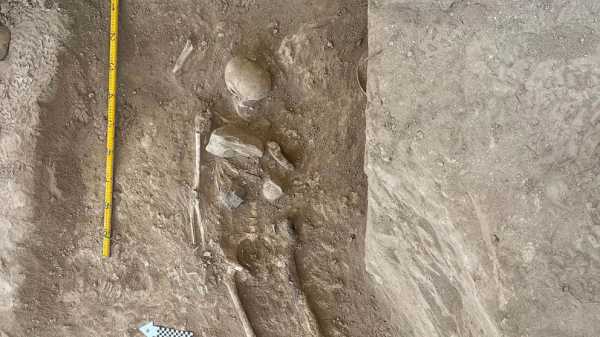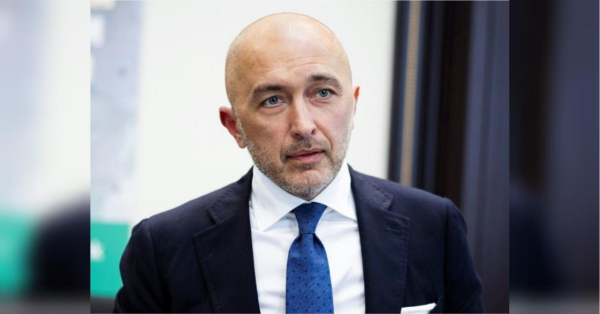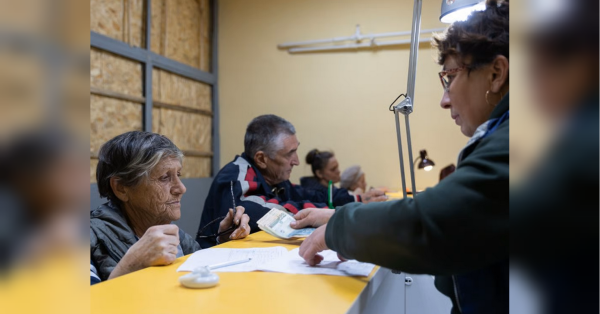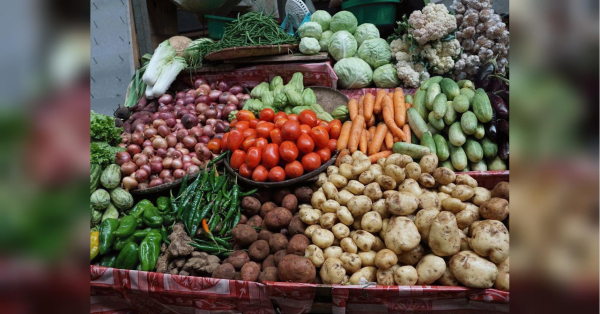
NICOSIA, Cyprus — New discoveries including gold ornaments and fine pottery at an ancient port city in Cyprus dating back more than 3,000 years indicate that the settlement was one of the Mediterranean’s most important trading posts in the late Bronze Age, an archeologist said Tuesday.
Professor Peter M. Fischer from the University of Gothenburg, Sweden, said the city now known as Hala Sultan Tekke because of its proximity to a famous mosque flourished in 1,630-1,150 B.C. because of its trade in the “most sought after product at that time” -– plentiful copper mined from the Troodos mountain range. Some theorize that Cyprus got its name from copper because of its ancient trade in the metal.
Fischer told The Associated Press that along with Mycenaean pottery, the Cypriot variety was “the most popular on the ‘intercultural’ market” of the time, reaching as far as modern-day Spain, Iraq, Turkey and Sudan.
Fischer, who concluded excavations at the site this year, said evidence now suggests “the great importance” of the ancient city, rivaling the majesty of Enkomi, considered the most important Bronze Age Cypriot city because of its unique layout.
He suggested that more fascinating discoveries could be in store at the Hala Sultan Tekke site because “maybe only 10%” has been exposed, with recent georadar and magnetometer surveys showing large building complexes 1-2 meters (3-7 feet) below the surface.
“The numerous finds of gold, most likely imported from Egypt but showing mainly Minoan motifs, demonstrate that the Egyptians received copper in exchange and that the contact with the Minoan-Mycenaean cultures was intense,” Fischer said in an email.
Maria Iakovou, a professor of archaeology at the University of Cyprus who was not involved in the research, said the new excavations bolster Fischer's assessment of the significance of the Hala Sultan Tekke site.
“I can confirm that the interpretations provided by Peter F. based on the richness of the material data from the excavations at HST are valid and well known to all of us working on the late Bronze Age of Cyprus and the Mediterranean,” Iakovou told The Associated Press.
Cyprus’ Antiquities Department said other discovered objects include sophisticated jewelry, daggers, knives, spearheads and a mirror of bronze. It said several items of ivory and tin-glazed pottery had been imported from Egypt during the 18th dynasty, the time of Pharaohs Thutmose III and Eknaton and his wife Nefertiti.
Another find was Nuragic pottery from Sardinia which showed it had also traded with Cypriots for copper.
Family tombs containing everyday objects that the deceased could use in the afterlife as well as items of luxury to show their wealth were also discovered. Fischer said preliminary results of DNA testing of the bones confirmed the “multiculturality” of the city’s inhabitants.
Other discoveries included semiprecious stones such as amber from the Baltics and lapis lazuli and carnelian from Mesopotamia and the northern Levant, according to Fischer.
Fischer said the discoveries confirm that the late Bronze Age was the first “international” period in the Mediterranean.
It’s unclear why the city was abandoned by 1,150 B.C., but Fischer said the rise of nomadic sea peoples may have contributed to the city’s downfall, in combination with a worsening climate and possibly epidemic diseases. The nearby port city of Kition, founded around 1,300 B.C., picked up the mantle from Hala Sultan Tekke.
Sourse: abcnews.go.com






